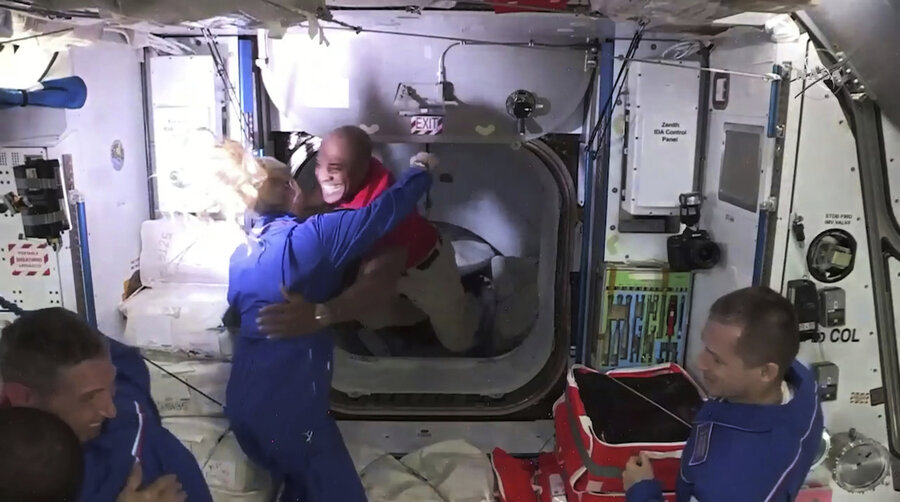SpaceX flight successfully delivers astronauts to space station
Loading...
| Cape Canaveral, Florida
SpaceX’s newly launched capsule arrived Monday at the International Space Station, where the four astronauts who were on board will live until spring.
The Dragon capsule pulled up and docked late Monday night, following a 27-hour, completely automated flight from NASA’s Kennedy Space Center. The linkup occurred 262 miles above Idaho.
“Oh, what a good voice to hear,” space station astronaut Kate Rubins called out when the Dragon’s commander, Mike Hopkins, first made radio contact.
“We can’t wait to have you on board,” she added after the two spacecraft were latched together.
This is the second astronaut mission for SpaceX. But it’s the first time Elon Musk’s company delivered a crew for a full, half-year station stay. The two-pilot test flight earlier this year lasted two months.
The four astronauts, three of whom are American and one of whom is Japanese, will remain at the orbiting lab until their replacements arrive on another Dragon in April. And so it will go, with SpaceX – and eventually Boeing – transporting astronauts to and from the station for NASA.
This regular taxi service got underway with Sunday night’s launch.
Mr. Hopkins and his crew – Victor Glover, Shannon Walkerm, and Japan’s Soichi Noguchi – join two Russians and one American who flew to the space station last month from Kazakhstan. Mr. Glover is the first African-American to move in for a long haul. A space newcomer, Mr. Glover was presented his gold astronaut pin Monday.
The four named their capsule Resilience to provide hope and inspiration during an especially difficult year for the whole world. They broadcast a tour of their capsule Monday, showing off the touchscreen controls, storage areas, and their zero gravity indicator: a small plush Baby Yoda.
Ms. Walker said it was a little tighter for them than for the two astronauts on the test flight.
“We sort of dance around each other to stay out of each other’s way,” she said.
For Sunday’s launch, NASA kept guests to a minimum because of coronavirus concerns, and even Mr. Musk had to stay away after tweeting that he “most likely” had an infection. He was replaced in his official launch duties by SpaceX President Gwynne Shotwell, who assured reporters Mr. Musk was still very much involved with Sunday night’s action, although remotely.
As they prepared for the space station linkup, the Dragon crew beamed down live window views of New Zealand and a brilliant blue, cloud-streaked Pacific 250 miles below.
“Looks amazing,” Mission Control radioed from SpaceX headquarters in Hawthorne, California.
“It looks amazing from up here, too,” Mr. Hopkins replied.
This story was reported by The Associated Press.





